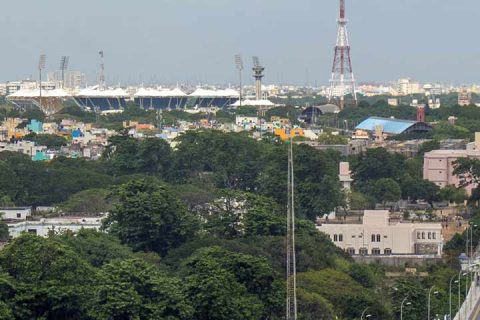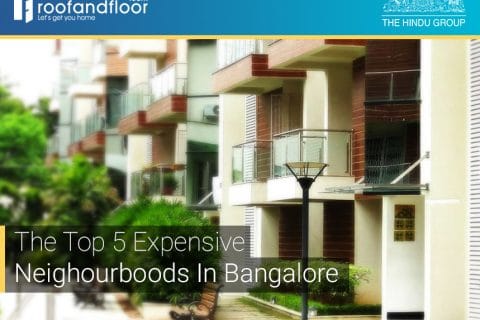
In India, the definition of luxury housing varies from city to city. A plush 2 BHK flat in a central location or in an area near corporate or IT employment hubs would qualify as a luxury home in Mumbai, Pune or Bangalore – solely on the basis of location. However, the classic Indian concept of a luxury home also involves generous size – a 3 or 4 BHK apartment is definitely defined as luxury. As a rule, such luxury flats are built by developers with specific expertise in this genre, as apart from large size, customers look for highly evolved amenities and facilities to create the necessary luxury ethos.
What drives demand for luxury homes?
It is a mistake to club the demand for ultra-luxury housing with that of the rest of the property market, because the dynamics are very different. The luxury homes market tends to be end-user centric in many cities. The higher ticket sizes mean only investors with considerable capital at their disposal are active in the luxury segment. The end-users who largely patronize the luxury housing segment generally do not need housing loans but buy such properties from their own capital, being from the affluent class.
Cities like Mumbai, Pune, Bangalore, Chennai and Delhi have their well-established high-value luxury homes locations. The people who live there have often been residents for several generations and are not open to relocating elsewhere. These locations have a rich share of natural ambience due to limited development norms being enforced there, and the high degree of social infrastructure ensures life is trouble-free and convenient.
Among this location-driven buyer set, the demand for genuine luxury homes is considerable. Due to very limited supply in these areas, such properties often tend to change hands among this specific buyer segment. Prices for such ultra-luxury homes are a function of both the high-value vanity addresses and the size and configuration. Rarely, a large family-owned property will be sold and redeveloped into limited-edition boutique homes which are immediately snapped up. We can see this dynamic actively at play in areas like Cuffe Parade, Nepean Sea Road, Worli, Juhu and Lower Parel in Mumbai. In Pune, the specific areas for such luxury housing are Sahakar Nagar, Boat Club Road, Kalyani Nagar and Koregaon Park.
Since they are meant to function as family estates, luxury homes in such areas doubtlessly need to get the size factor right. Such extra-large ultra-luxury living spaces are naturally expected to offer ultra-modern luxurious amenities which can be upgraded as technological advancements push the luxury envelope further up the value chain. These addresses may or may not be centrally located, but that factor does not, in any case, play a big role.
Why core luxury addresses never change?
Spatial expansion of cities like Pune, Bangalore, Chennai and Delhi is constantly pushing city boundaries further. Simultaneously, new workplace hubs geared to the booming Information Technology sector have sprung up in the emerging locations, which Infotech companies prefer because of lower property costs. Residential catchments form around these IT hubs to respond to the demand for homes from their employees.
These new residential areas usually see high demand for homes of all ticket sizes, including the more expensive ‘green homes.’ While these higher-end homes definitely fall in the category of premium housing, the locations themselves do not spell luxury. The same dynamic can be seen around large manufacturing hubs, where premium housing can be found in locations which have essentially have an industrial, blue-collar image. Through all this expansion, a city’s core luxury address locations remain static and continue to hold sway even as the city itself grows in all directions.
These addresses have very little to do with Indian real estate’s primary growth driver, which is employment generation. They are the home of the city’s landed gentry – its long-established core of wealth. Though property owners in these locations are often owners of very large businesses, they themselves are not dependent on quick access to workplace hubs. They have earned a far more leisurely life long ago, and their main objective and prerogative is to dwell among their peers in an environment untouched by the mass development in every other part of the city.
Immune to general market dynamics
Demand for luxury housing in these elite locations is always steady. Developers, who have the rare opportunity to create new luxury housing projects there, will invariably have a dedicated inner circle of HNI buyers and investors who will snap up their limited-edition offerings. Such buyers will enter the project at the pre-launch or under construction stage to avail of the best rates. Such housing is more or less impervious to recession, as buyers are not dependent on home loans but largely use their own capital.
The marketing strategy for homes in a city’s core luxury areas also differs significantly from the kind of campaigns developers use to promote mid-income housing projects. The marketing approach focuses more on aspiration for exclusivity and status among people who can afford it. While word-of-mouth communication among core investors usually suffices to draw massive inquiries, developers will also advertise these offerings in prestigious lifestyle magazines, airport lounges and similar platforms.




